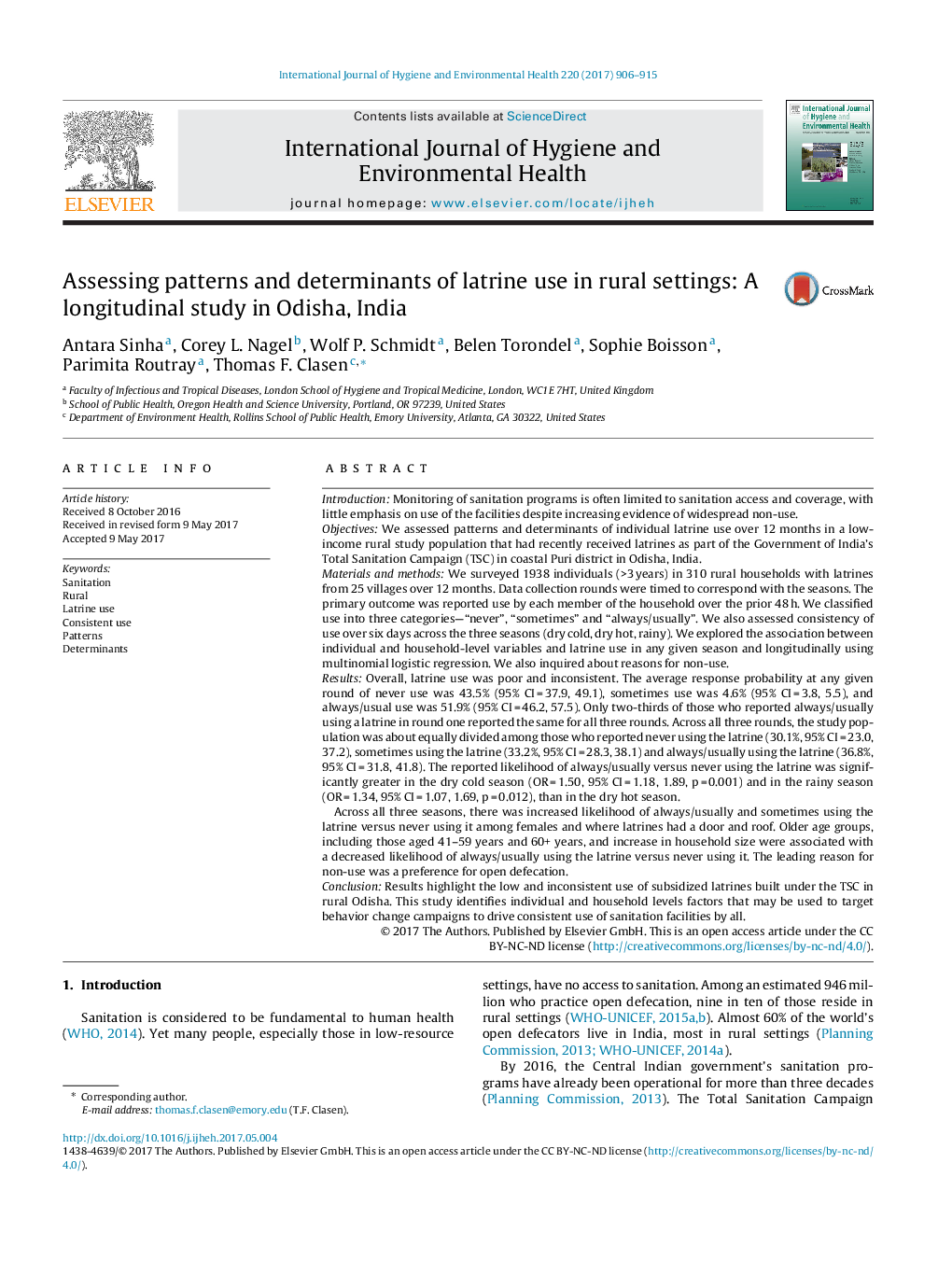| کد مقاله | کد نشریه | سال انتشار | مقاله انگلیسی | نسخه تمام متن |
|---|---|---|---|---|
| 5560589 | 1561872 | 2017 | 10 صفحه PDF | دانلود رایگان |
IntroductionMonitoring of sanitation programs is often limited to sanitation access and coverage, with little emphasis on use of the facilities despite increasing evidence of widespread non-use.ObjectivesWe assessed patterns and determinants of individual latrine use over 12 months in a low- income rural study population that had recently received latrines as part of the Government of India's Total Sanitation Campaign (TSC) in coastal Puri district in Odisha, India.Materials and methodsWe surveyed 1938 individuals (>3 years) in 310 rural households with latrines from 25 villages over 12 months. Data collection rounds were timed to correspond with the seasons. The primary outcome was reported use by each member of the household over the prior 48 h. We classified use into three categories-“never”, “sometimes” and “always/usually”. We also assessed consistency of use over six days across the three seasons (dry cold, dry hot, rainy). We explored the association between individual and household-level variables and latrine use in any given season and longitudinally using multinomial logistic regression. We also inquired about reasons for non-use.ResultsOverall, latrine use was poor and inconsistent. The average response probability at any given round of never use was 43.5% (95% CI = 37.9, 49.1), sometimes use was 4.6% (95% CI = 3.8, 5.5), and always/usual use was 51.9% (95% CI = 46.2, 57.5). Only two-thirds of those who reported always/usually using a latrine in round one reported the same for all three rounds. Across all three rounds, the study population was about equally divided among those who reported never using the latrine (30.1%, 95% CI = 23.0, 37.2), sometimes using the latrine (33.2%, 95% CI = 28.3, 38.1) and always/usually using the latrine (36.8%, 95% CI = 31.8, 41.8). The reported likelihood of always/usually versus never using the latrine was significantly greater in the dry cold season (OR = 1.50, 95% CI = 1.18, 1.89, p = 0.001) and in the rainy season (OR = 1.34, 95% CI = 1.07, 1.69, p = 0.012), than in the dry hot season.Across all three seasons, there was increased likelihood of always/usually and sometimes using the latrine versus never using it among females and where latrines had a door and roof. Older age groups, including those aged 41-59 years and 60+ years, and increase in household size were associated with a decreased likelihood of always/usually using the latrine versus never using it. The leading reason for non-use was a preference for open defecation.ConclusionResults highlight the low and inconsistent use of subsidized latrines built under the TSC in rural Odisha. This study identifies individual and household levels factors that may be used to target behavior change campaigns to drive consistent use of sanitation facilities by all.
Journal: International Journal of Hygiene and Environmental Health - Volume 220, Issue 5, July 2017, Pages 906-915
